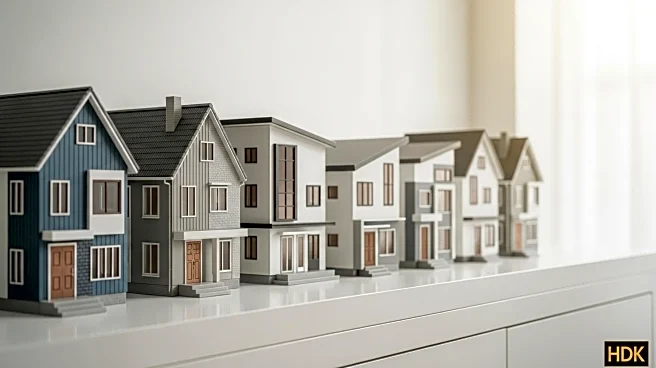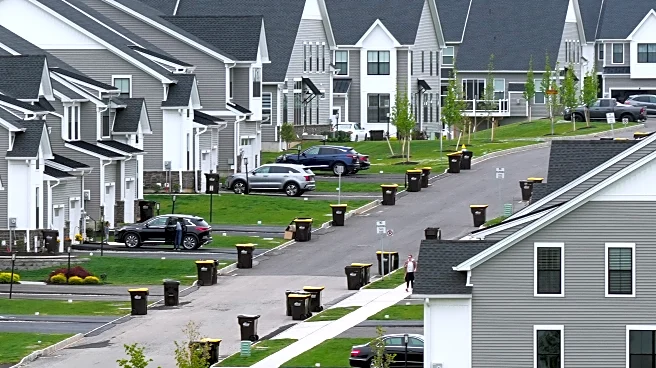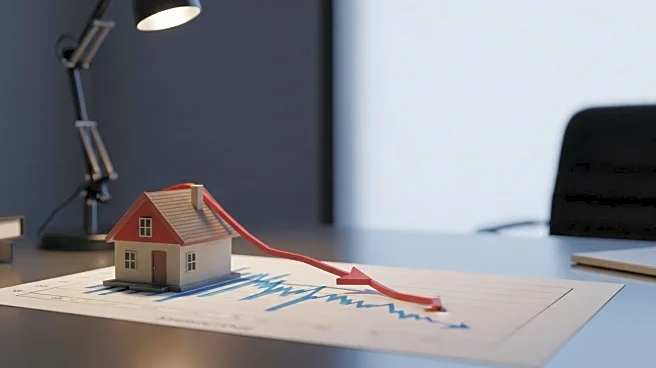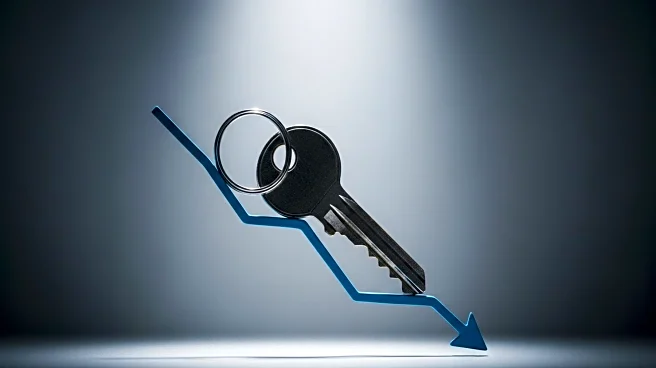What's Happening?
Sales of previously occupied U.S. homes remained sluggish in August, despite a decline in mortgage rates that brought borrowing costs to a 10-month low. According to the National Association of Realtors, existing home sales slipped 0.2% from July to a seasonally adjusted annual rate of 4 million units, marking the slowest sales pace since June. Although sales rose 1.8% compared to August last year, the national median sales price increased by 2% to $422,600, the highest for any August since 1999. The U.S. housing market has been in a slump since 2022, with sales down 1.2% through the first eight months of this year compared to the same period last year. Despite lower mortgage rates, borrowing costs remain high, making it difficult for many Americans to afford homes.
Why It's Important?
The sluggish home sales highlight ongoing affordability issues in the U.S. housing market, which have been exacerbated by rising home prices and high borrowing costs. This situation particularly affects first-time homebuyers, who accounted for only 28% of home sales last month, down from the historical average of 40%. The decline in sales and high prices could lead to a more prolonged housing market slowdown, impacting economic growth and consumer spending. Additionally, the inventory of homes for sale has increased, suggesting a more balanced supply and demand, but still remains below pre-pandemic levels. The market's response to declining mortgage rates will be crucial in determining future sales trends.
What's Next?
If mortgage rates continue to ease, it could encourage more buyers to enter the market, potentially leading to a more active fall home sales season. However, economists predict that the average rate on a 30-year mortgage will remain above 6% this year, which may limit the impact of lower rates. Homebuilders are attempting to boost sales by lowering prices and offering incentives, but the overall market remains constrained by affordability issues and a shortage of homes, particularly in the affordable segment. The longer homes remain on the market, the more pressure there is on sellers to lower prices, which could further influence market dynamics.
Beyond the Headlines
The current housing market conditions may lead to broader economic implications, including potential shifts in consumer behavior and spending patterns. As affordability remains a significant barrier, there could be increased demand for rental properties, impacting rental markets and housing policies. Additionally, the prolonged sales slump may influence future housing development and investment strategies, as stakeholders reassess market viability and growth potential.











